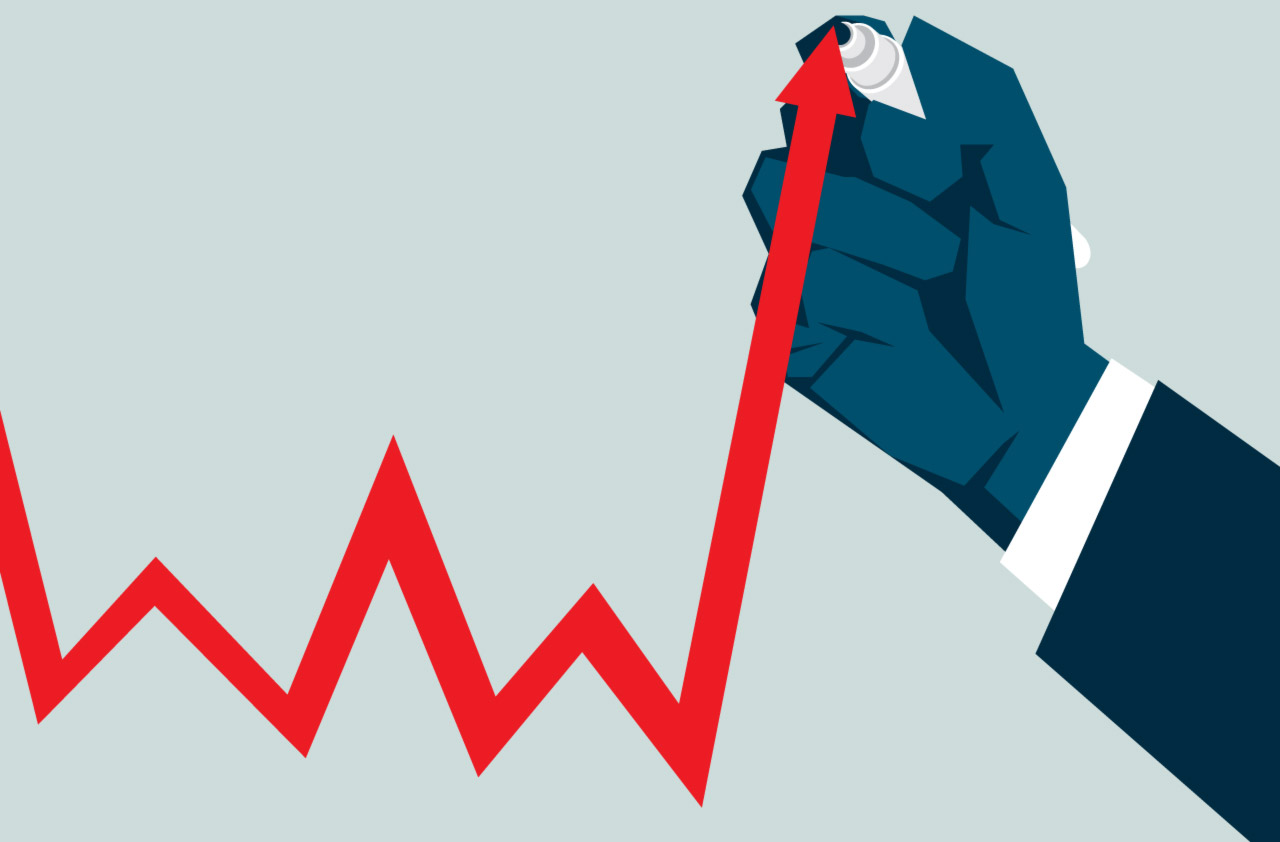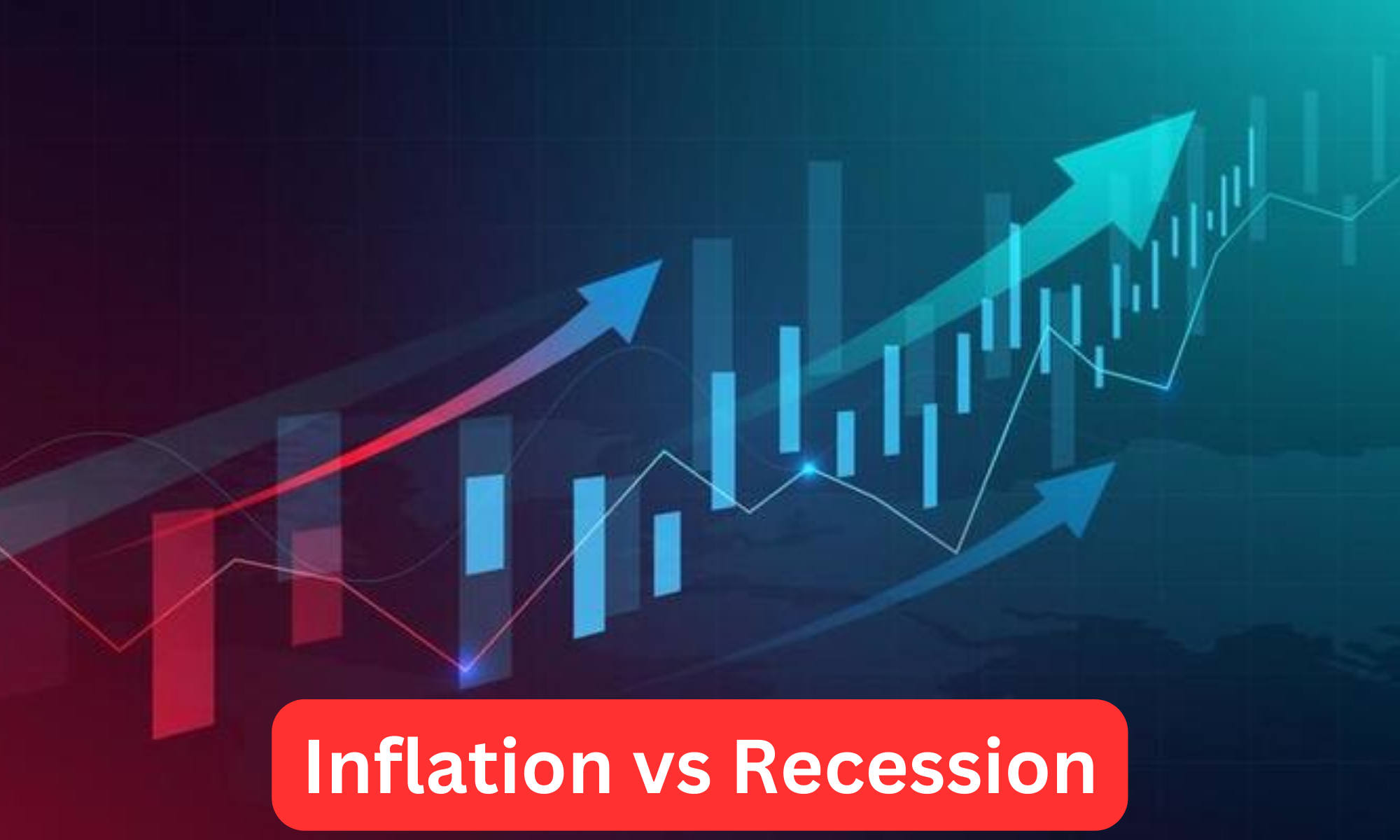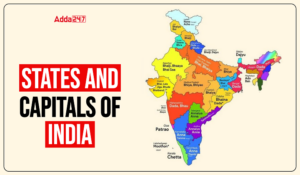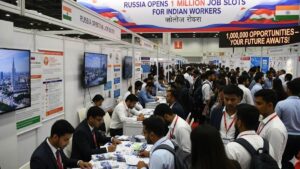Inflation vs Recession
Inflation and recession are two economic terms that are often used to describe the health of a country’s economy. While they may seem like opposite concepts, they are actually related and can often occur together. In this article, we’ll explore the differences between inflation and recession, as well as their impact on the economy.
Buy Prime Test Series for all Banking, SSC, Insurance & other exams
Inflation vs Recession: What is Inflation?
Inflation is a measure of the rate at which the general price level of goods and services in an economy is increasing over time. Inflation is usually measured by the Consumer Price Index (CPI), which is a basket of goods and services that are commonly purchased by consumers. When the CPI increases, it means that the cost of these goods and services is rising, which reduces the purchasing power of the currency. This can cause the value of money to decrease and can lead to a decrease in economic growth.
Inflation can occur for a variety of reasons, including an increase in the money supply, rising production costs, or a decrease in supply of goods and services. When inflation is high, it can lead to an increase in interest rates, which can discourage borrowing and investment. Inflation can also lead to a decrease in the value of investments, such as stocks and bonds.

Inflation vs Recession: Significance of Inflation
Inflation is an economic concept that measures the rate at which the general price level of goods and services in an economy is rising. It is commonly expressed as a percentage increase in the Consumer Price Index (CPI) or the Producer Price Index (PPI). Inflation is a complex phenomenon that can have both positive and negative impacts on an economy, depending on the level and nature of inflation.
- One of the primary functions of inflation is to maintain a stable level of prices in an economy.
- When the rate of inflation is moderate and predictable, it can help businesses and consumers plan and make decisions with confidence.
- A low and stable inflation rate also helps maintain the purchasing power of a currency, ensuring that people can buy the goods and services they need without having to worry about rapid price increases.
- Inflation can also have positive effects on economic growth.
- When inflation is moderate and predictable, it can encourage businesses to invest in new projects and expand their operations, knowing that they can earn a profit and that their costs will not increase too rapidly.
- This increased investment can lead to increased employment opportunities and higher wages for workers, contributing to economic growth.
- However, inflation can also have negative impacts on an economy. When inflation is high and unpredictable, it can lead to a decrease in the value of savings and investments.
- This can discourage people from saving and investing, leading to a decrease in the amount of capital available for businesses to use to expand their operations.
- Additionally, high inflation can lead to increased uncertainty and volatility in financial markets, which can discourage investment and lead to lower economic growth.
- Inflation can also lead to an increase in the cost of borrowing, making it more difficult for businesses and individuals to access credit.
Inflation can also have distributional effects, with different groups in society being impacted differently by changes in the price level. For example, those on fixed incomes, such as pensioners, may be particularly vulnerable to inflation, as their income will not rise in line with price increases. Similarly, those with large debts, such as homeowners with mortgages, may benefit from inflation, as the real value of their debt decreases over time.
Inflation vs Recession: Ways to Control Inflation
Inflation is a sustained increase in the general price level of goods and services in an economy over a period of time. It can have adverse effects on an economy, such as reducing the purchasing power of consumers and businesses, reducing investment, and increasing uncertainty.
Here are some ways to control inflation:
1. Ways to Control Inflation: Monetary Policy
Central banks can use monetary policy tools such as raising interest rates, reducing the money supply, and increasing reserve requirements for banks to control inflation. These measures can reduce the amount of money in circulation, making it more expensive to borrow, and therefore reducing demand for goods and services.
2. Ways to Control Inflation: Fiscal Policy
Governments can use fiscal policy tools such as increasing taxes, reducing government spending, and reducing subsidies to control inflation. These measures can reduce aggregate demand and reduce pressure on prices.
3. Ways to Control Inflation: Exchange rate policy
Central banks can use exchange rate policy to control inflation by managing the exchange rate of their currency against other currencies. A stronger currency can reduce the cost of imports and help control inflation.
4. Ways to Control Inflation: Supply-side policies
Governments can implement supply-side policies such as improving infrastructure, reducing regulatory barriers, and investing in education and training to increase the supply of goods and services. Increased supply can help to reduce inflationary pressures.
5. Ways to Control Inflation: Wage controls
Governments can introduce wage controls to limit the rate of increase in wages. This can help to control inflation by reducing labor costs and reducing the cost of goods and services.
6. Ways to Control Inflation: Price controls
Governments can introduce price controls to limit the price of goods and services. However, this measure is often considered ineffective in the long term and can lead to shortages of goods and services.
It is important to note that the effectiveness of these measures depends on the specific circumstances of each economy and the type of inflation that is being experienced. Therefore, a combination of these measures may be needed to effectively control inflation.
Inflation vs Recession: What is Recession?
Recession is a period of significant economic decline characterized by a decrease in gross domestic product (GDP), employment, and production. Recessions occur when there is a general economic downturn, which can be caused by a variety of factors, including a decrease in consumer spending, a decrease in business investment, or a decrease in government spending.
During a recession, businesses may lay off employees, and consumer spending may decrease as people become more cautious with their money. This can lead to a decrease in demand for goods and services, which can further reduce economic growth.

Inflation vs Recession: Significance of Recession
Recession is a term used to describe a period of significant economic decline. It is typically characterized by a decline in GDP, employment rates, and consumer spending. While it is often viewed negatively, recession can have both positive and negative impacts on the economy.
- One of the most significant impacts of a recession is the reduction in consumer spending.
- This reduction in spending can lead to a decrease in production, as companies cut back on their output due to reduced demand.
- However, this reduction in production can also lead to a decrease in inflation, as there is less money flowing through the economy.
- Additionally, recessions can also lead to increased innovation and creativity in the business world.
- As companies struggle to stay afloat during a recession, they are forced to find new and innovative ways to cut costs and increase revenue.
- This can lead to the development of new products and services, as well as new business models that are more efficient and effective.
- Another significant impact of a recession is its effect on the labor market. As companies cut back on production, they may also be forced to lay off workers.
- This can lead to higher unemployment rates and reduced income for those who are still employed. However, it can also lead to a more competitive job market, as workers are forced to compete for fewer available jobs.
- This can lead to higher wages and better working conditions for those who are able to secure employment.
- Recessions can also lead to a decrease in consumer debt. As consumers reduce their spending, they may also be forced to pay down their debts.
- This can lead to a reduction in household debt levels, which can ultimately lead to a more stable and sustainable economy in the long run.
Finally, recessions can also provide an opportunity for governments to implement policies that can help mitigate the negative impacts of the recession. This can include measures such as fiscal stimulus packages, monetary policy adjustments, and investment in infrastructure and other public goods. These policies can help to stimulate economic growth and create jobs, while also providing a safety net for those who are most vulnerable to the effects of the recession.
Inflation vs Recession: Ways to Control Recession
Recession is a period of economic decline characterized by a decrease in GDP, high unemployment rates, and a general slowdown in economic activity. It can be caused by various factors, such as a decline in consumer confidence, a decrease in investment, and a decrease in international trade. Here are some ways to control a recession:
1. Ways to Control Recession: Fiscal policy
The government can increase its spending to stimulate the economy. This can be done by increasing infrastructure spending, providing tax cuts, or increasing unemployment benefits.
2. Ways to Control Recession: Monetary policy
The central bank can lower interest rates to encourage borrowing and investment. This makes it cheaper for businesses and consumers to borrow money, which can lead to increased spending and economic activity.
3. Ways to Control Recession: International trade
The government can promote international trade to increase exports and create new jobs. This can be done by negotiating new trade agreements or reducing trade barriers.
4. Ways to Control Recession: Investment incentives
The government can provide incentives for businesses to invest in new projects and technologies. This can include tax credits, subsidies, or grants.
5. Ways to Control Recession: Consumer confidence
The government can take steps to increase consumer confidence, such as providing job training programs or offering financial counseling to individuals.
6. Ways to Control Recession: Infrastructure projects
The government can invest in infrastructure projects, such as building roads, bridges, and public transportation systems. This can create new jobs and stimulate economic growth.
It’s worth noting that these policies are not mutually exclusive and can be used in combination to effectively control a recession. Additionally, the effectiveness of these policies may vary depending on the specific circumstances of the recession.
Inflation vs Recession
- Inflation and recession are related in that they can both have a negative impact on the economy. However, they are different concepts that can occur independently of each other.
- During periods of inflation, the economy is growing, but at a slower rate due to the increase in prices. During a recession, the economy is actually contracting, which means that there is less economic activity taking place.
- Inflation can also lead to a decrease in economic growth if it is not properly managed. If inflation becomes too high, it can lead to a decrease in purchasing power and a decrease in economic activity.
- During a recession, inflation may actually decrease as prices for goods and services fall due to a decrease in demand. However, this can also lead to a decrease in wages and employment as businesses struggle to stay afloat.
Inflation vs Recession: Key differences between inflation and recession
Here are some tabular pointers that highlight the key differences between inflation and recession:
Inflation vs Recession: Key differences between Inflation and Recession |
||
|---|---|---|
| Aspect | Inflation | Recession |
| Definition | A persistent increase in the general level of prices of goods and services over time. | A significant decline in economic activity, typically characterized by a decrease in GDP, employment, and income. |
| Cause | Increase in demand relative to supply or increase in the money supply relative to economic output. | Decrease in demand relative to supply or a contraction in the money supply. |
| Effects on prices | Prices of goods and services generally rise. | Prices of goods and services generally fall. |
| Effects on employment | Typically, high inflation leads to lower unemployment rates, but hyperinflation can result in high unemployment rates. | Typically, recession leads to higher unemployment rates as businesses cut back on hiring and may lay off workers. |
| Effects on economic growth | High inflation can lead to lower economic growth over the long term. | Recession leads to a contraction of the economy in the short term, but can lay the foundation for future growth as businesses adjust and adapt. |
| Policy response | Central banks can raise interest rates, reduce the money supply, and tighten monetary policy to control inflation. Governments may also implement fiscal policies like reducing spending or raising taxes. | Central banks can lower interest rates, increase the money supply, and implement monetary stimulus measures to combat recession. Governments may also implement fiscal policies like increasing spending or cutting taxes. |
It’s important to note that inflation and recession can coexist or even exacerbate each other, and policymakers may need to use a combination of monetary and fiscal policies to address both issues.
Also Read: Wholesale inflation continues downtrend, moderates to 1.34% in March
Find More News on Economy Here





 States and Capitals - How Many States in...
States and Capitals - How Many States in...
 FIDE World Cup 2025 to Be Hosted in Goa
FIDE World Cup 2025 to Be Hosted in Goa
 Russia Opens 1 Million Job Slots for Ind...
Russia Opens 1 Million Job Slots for Ind...

